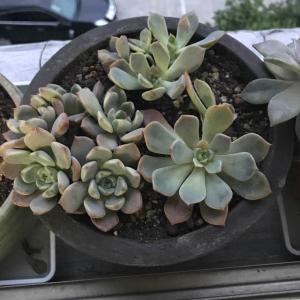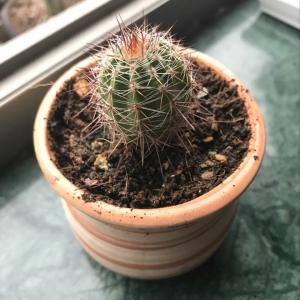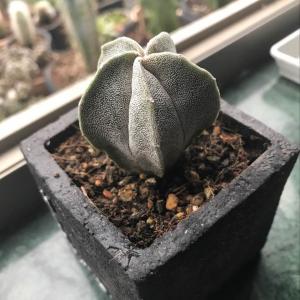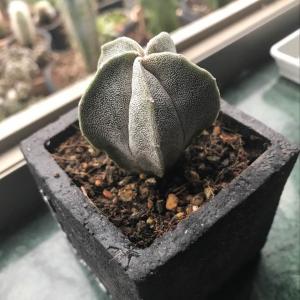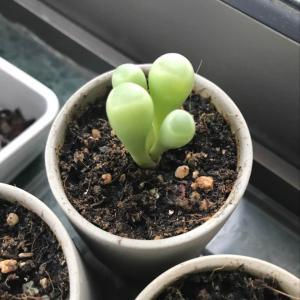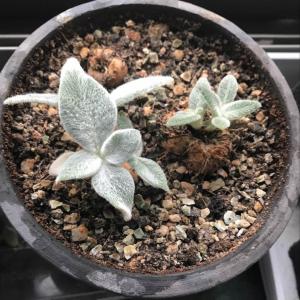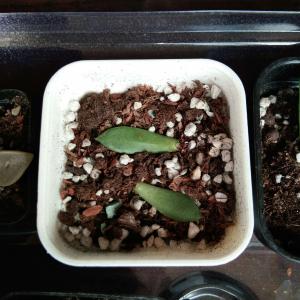文章
Dummer. ゛☀
2017年09月19日

Zones
Hardy succulents are hardy zone 3-9 unless otherwise labeled. Plants shipped in early spring are dormant. They will appear dull in color and have some dry edges. This is normal and when placed in sunlight they will intensify in color. Sempervivums change color with the seasons and each variety has its own most colorful time of the year.
Light
Most varieties need at least half a day to a full day of sunlight. In extremely hot areas some afternoon shade is recommended.
Planting
Remove plants from their pots and plant making sure the soil level remains the same depth on the plant. Once established, your succulents will benefit from a layer of pebbles or pea gravel spread on the soil around the plant. This is also very decorative.
Soil
Succulents need good draining soil. When planting in the garden, make sure the area drains well and is not in a low spot that would stay wet. For container planting you can purchase cactus soil or incorporate sand, gravel or volcanic rock for better drainage. The container you are planting in should have a drainage hole or put crushed rock on the bottom before your planting medium.
Watering
After planting, water in well and allow the soil to dry slightly between waterings. Succulents don’t like to have wet feet. When you do water, water thoroughly.
Fertilizer
Most succulents need very little fertilizer. Watering with a well balanced fertilizer once a month will be all they need.
Flowering
Sedum all have different bloom times and colors ranging from pink, red and yellow. Sempervivums will bloom after the second or third year. A flower stalk will shoot up from the center of the main rosette with a cluster of flowers. After the flower dies, gently twist off the stalk. The main rosette has put on new offsets that will fill in.
Uses
The planting possibilities using succulents are endless. The different colors, textures and habits make the most interesting containers and troughs. Succulents make beautiful rock garden plants. With a wide variety of bloom times there is always something with color.
Hardy succulents are hardy zone 3-9 unless otherwise labeled. Plants shipped in early spring are dormant. They will appear dull in color and have some dry edges. This is normal and when placed in sunlight they will intensify in color. Sempervivums change color with the seasons and each variety has its own most colorful time of the year.

Light
Most varieties need at least half a day to a full day of sunlight. In extremely hot areas some afternoon shade is recommended.
Planting
Remove plants from their pots and plant making sure the soil level remains the same depth on the plant. Once established, your succulents will benefit from a layer of pebbles or pea gravel spread on the soil around the plant. This is also very decorative.

Soil
Succulents need good draining soil. When planting in the garden, make sure the area drains well and is not in a low spot that would stay wet. For container planting you can purchase cactus soil or incorporate sand, gravel or volcanic rock for better drainage. The container you are planting in should have a drainage hole or put crushed rock on the bottom before your planting medium.
Watering
After planting, water in well and allow the soil to dry slightly between waterings. Succulents don’t like to have wet feet. When you do water, water thoroughly.

Fertilizer
Most succulents need very little fertilizer. Watering with a well balanced fertilizer once a month will be all they need.
Flowering
Sedum all have different bloom times and colors ranging from pink, red and yellow. Sempervivums will bloom after the second or third year. A flower stalk will shoot up from the center of the main rosette with a cluster of flowers. After the flower dies, gently twist off the stalk. The main rosette has put on new offsets that will fill in.

Uses
The planting possibilities using succulents are endless. The different colors, textures and habits make the most interesting containers and troughs. Succulents make beautiful rock garden plants. With a wide variety of bloom times there is always something with color.
2
4
文章
Dummer. ゛☀
2017年09月19日

Succulents are hardy plants that add a striking appearance to any garden or home. Performing best in U.S. Department of Agriculture hardiness zones 3 through 9, succulents are good plants for the novice and expert gardener alike, as they require little attention. Because succulents are desert plants, they should be watered sparingly. Succulents are typically not susceptible to insect or pest infestation, but overwatering can lead to root or stem rot, a preventable and easily fixable disease. Succulents with signs of root or stem rot should be treated immediately.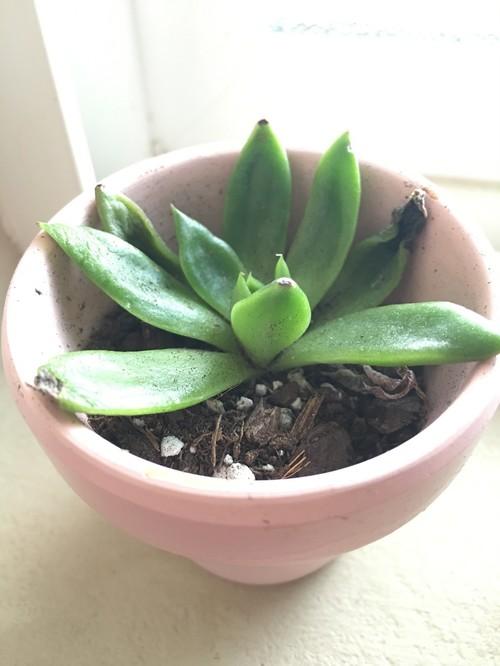
1. Check the plant for infected areas. These typically appear as dark brown to black spots or areas on the low part of the plant. Other signs of root or stem rot include puckered flesh with a dark tint around the infected area.
2. Stop watering a plant with rot. Remove the plant from its pot. Remove the soil mixture and clean out the pot thoroughly to ensure no remnants of the fungus are left.
3. Cut the infected black stem from the plant with a garden knife. Let the healthy portion of the plant dry naturally for several hours, keeping the succulent out of direct sunlight during this process. If other areas of the plant are showing minimal signs of rot, keep an eye on the plant. Succulents can recover from stem rot if properly watered and placed in a warm, dry location.
4. Using the cleaned out pot or a fresh one, combine equal parts soil, coarse sand and peat moss. Don’t reuse any of the materials used with the infected plant.
5. Pour roughly 2 inches (5 cm) of the mixture into the pot. Place the newly doctored succulent into the pot with the roots lying on top of the soil. Fill the pot with the soil mixture until it reaches the base of the stems. Firmly pat the soil around the plant.
6. Place the succulent in a brightly lit spot with warm temperatures. Succulents prefer dry climates, so don’t place the plant in a humid location.
7. Water the plant with just enough water to moisten the soil one week after repotting. After the soil has completely dried out, you can water more thoroughly.
Succulents grow best in well-drained soils that provide a high water-holding capacity. Planting succulents in a clay pot with a drainage hole ensures there is no sitting water and that the soil dries out between waterings. Succulents are dormant during the winter and should only be watered lightly at this time.

1. Check the plant for infected areas. These typically appear as dark brown to black spots or areas on the low part of the plant. Other signs of root or stem rot include puckered flesh with a dark tint around the infected area.
2. Stop watering a plant with rot. Remove the plant from its pot. Remove the soil mixture and clean out the pot thoroughly to ensure no remnants of the fungus are left.

3. Cut the infected black stem from the plant with a garden knife. Let the healthy portion of the plant dry naturally for several hours, keeping the succulent out of direct sunlight during this process. If other areas of the plant are showing minimal signs of rot, keep an eye on the plant. Succulents can recover from stem rot if properly watered and placed in a warm, dry location.
4. Using the cleaned out pot or a fresh one, combine equal parts soil, coarse sand and peat moss. Don’t reuse any of the materials used with the infected plant.

5. Pour roughly 2 inches (5 cm) of the mixture into the pot. Place the newly doctored succulent into the pot with the roots lying on top of the soil. Fill the pot with the soil mixture until it reaches the base of the stems. Firmly pat the soil around the plant.
6. Place the succulent in a brightly lit spot with warm temperatures. Succulents prefer dry climates, so don’t place the plant in a humid location.
7. Water the plant with just enough water to moisten the soil one week after repotting. After the soil has completely dried out, you can water more thoroughly.

Succulents grow best in well-drained soils that provide a high water-holding capacity. Planting succulents in a clay pot with a drainage hole ensures there is no sitting water and that the soil dries out between waterings. Succulents are dormant during the winter and should only be watered lightly at this time.
0
1
文章
Miss Chen
2017年09月18日

#茶花潜叶蛾
分布与危害
被害幼叶的表皮出现半透明斑纹,被害新梢的表皮,出现白色或半透明泡状。茶花植株生长不良,叶片扭曲脱落。
形态特征
成虫体长3-4毫米,翅展8-9毫米。体银白色,具光泽。头顶乳黄色,有1束的银白色毛竖立着;触角基部形成大的“眼罩”。前翅银白色,前缘近中央1波纹状斜带伸向后缘,近端部有褐色纹4条,l-2条、3-4条之间呈淡黄色,2-3条之间为银白色。臀角上有1黑色斑纹,斑纹中间有银色凸起,缘毛前半部褐色,后半部银白色;后翅披针形,银白色,缘毛极长。腹部腹面6节,雄虫第9节背板明显,与雌虫的区别。复眼黑色,常被触角鳞毛覆盖。
卵长0.3毫米,扁圆形,暗灰色,表面具网眼状刻纹。
幼虫老熟幼虫体长6.5毫米,体扁平,黄白色。头部及胴部每节侧方生有长毛3根。前胸背板乳白色。体节明显,腹部第三节最大,后方各节逐渐缩小。褐色口器,触角3节,单眼2个,呈黑褐色。
蛹藏于白色丝茧内,长3毫米,浅黄色,梭形。
发生规律
潜叶蛾以幼虫潜入茶花嫩叶和新梢皮下,进行蛀食,5月份开始危害,6月份虫害逐渐严重,到7~9月份虫害最为严重。
防治方法
①、化学防治:尽量选择在低龄幼虫期防治。此时虫口密度小,危害小,且虫的抗药性相对较弱。防治时用45%丙溴辛硫磷(国光依它)1000倍液,或国光乙刻(20%氰戊菊酯)1500倍液+乐克(5.7%甲维盐)2000倍混合液,40%啶虫.毒(必治)1500-2000倍液喷杀幼虫,可连用1-2次,间隔7-10天。可轮换用药,以延缓抗性的产生。
②、家庭盆栽茶花如有若虫为害,可用人工捕捉杀灭。
分布与危害
被害幼叶的表皮出现半透明斑纹,被害新梢的表皮,出现白色或半透明泡状。茶花植株生长不良,叶片扭曲脱落。
形态特征
成虫体长3-4毫米,翅展8-9毫米。体银白色,具光泽。头顶乳黄色,有1束的银白色毛竖立着;触角基部形成大的“眼罩”。前翅银白色,前缘近中央1波纹状斜带伸向后缘,近端部有褐色纹4条,l-2条、3-4条之间呈淡黄色,2-3条之间为银白色。臀角上有1黑色斑纹,斑纹中间有银色凸起,缘毛前半部褐色,后半部银白色;后翅披针形,银白色,缘毛极长。腹部腹面6节,雄虫第9节背板明显,与雌虫的区别。复眼黑色,常被触角鳞毛覆盖。
卵长0.3毫米,扁圆形,暗灰色,表面具网眼状刻纹。
幼虫老熟幼虫体长6.5毫米,体扁平,黄白色。头部及胴部每节侧方生有长毛3根。前胸背板乳白色。体节明显,腹部第三节最大,后方各节逐渐缩小。褐色口器,触角3节,单眼2个,呈黑褐色。
蛹藏于白色丝茧内,长3毫米,浅黄色,梭形。
发生规律
潜叶蛾以幼虫潜入茶花嫩叶和新梢皮下,进行蛀食,5月份开始危害,6月份虫害逐渐严重,到7~9月份虫害最为严重。
防治方法
①、化学防治:尽量选择在低龄幼虫期防治。此时虫口密度小,危害小,且虫的抗药性相对较弱。防治时用45%丙溴辛硫磷(国光依它)1000倍液,或国光乙刻(20%氰戊菊酯)1500倍液+乐克(5.7%甲维盐)2000倍混合液,40%啶虫.毒(必治)1500-2000倍液喷杀幼虫,可连用1-2次,间隔7-10天。可轮换用药,以延缓抗性的产生。
②、家庭盆栽茶花如有若虫为害,可用人工捕捉杀灭。
0
1
文章
权问薇
2017年09月17日

#君子兰
君子兰养了2-3年以上,就会在君子兰母株上爆出很多小芽。这些小芽切下来种在土里,就能变成新的君子兰了。

操作步骤:
1、发现家里的君子兰爆小芽了之后,不用管,等到小芽长出2-3片叶子的时候,再对君子兰进行脱盆处理。在脱盆前的1周内,最好不要浇水,以便盆土分离。

2、将花盆倒扣过来,一只手握住君子兰的根茎,另外一只手慢慢敲击花盆,从而让君子兰脱盆。脱盆后,将君子兰根系上的土壤清理干净。

3、将君子兰的根系浸泡在多菌灵溶液或高锰酸钾溶液中,大概20分钟即可,之后放在阴凉通风的地方将根系晾干。

4、根系晾干了后,用消毒后的小刀将带着君子兰小芽的根系切下来。为了让切下来的君子兰小芽成活率更高,在切的时候最好多带点根系,这样才更能生根快、生根多。

5、切下来的君子兰小芽和母株伤口上,都要撒点多菌灵粉末,以达到杀菌消毒的作用,之后放在阴凉通风处将伤口晾干。

6、伤口晾干后,即可进行上盆操作。土壤一定要选择疏松、透气的营养土,可以用园土、珍珠岩按照3:1的比例配置,还可以再掺点松针。

7、重新上盆后,放在阴凉通风的地方缓2-3周,让君子兰小芽能够适应新土壤重新生长。经过这样操作后,1株君子兰就能变成好几盆了!

吊兰
有些花友家里的吊兰养的特别好,不仅养成了瀑布,还长出了好多小吊兰。这些小吊兰剪下来就又成了新的吊兰了。各位花友是不是觉得特别方便?

操作方法:
1、用消过毒的剪刀,将吊兰母株上的小吊兰剪下来。

2、剪下来的小吊兰上最好要带点气生根,这样才更容易生根成活。

3、准备需要的土壤,土壤一定要疏松透气、排水性良好,可以用腐叶土和河沙按照3:1的比例混合而成,之后浇1次透水即可。

4、将小吊兰插入土壤中大概2-3cm的地方,之后放在阴凉通风的地方缓和一段时间,再正常养护即可。

兰花
花花身边养兰花的朋友不少,但是能够把兰花养得特别好的朋友却不多。毕竟兰花算是不太好养的花了,只是如果你能将一株兰花养好了,分分钟就能变成好几盆呢!

操作步骤:
1、在分株之前,要将兰花停水10-15天,这样脱盆后根系的水分比较少,操作起来也就不容易断根。脱盆的时候,先将花盆四周拍打一下,之后将花盆侧翻慢慢倒出来,记住千万别把新芽和根尖给碰坏了。

2、脱盆后,将兰花根系上的土壤清理干净,然后用清水清洗,将根系梳理整齐,露出白花花的根系。

3、用消过毒的剪刀,对兰花进行分株操作,保证每个兰花植株上都至少有1条健壮的根系。

4、将兰花分株后,浸泡在多菌灵溶液中大概半个小时以上,以达到杀菌消毒的目的,之后拿出来放在阴凉处晾干伤口。

5、将根系晾干后,重新上盆即可。养兰花的植料一定要疏松透气,陶粒、树皮、煤渣、木屑等全都可以。兰花上盆后,要浇1次透水,之后放在阴凉通风的地方缓1-2周即可。

文竹
现在不少人家里都养了文竹,想要让文竹1株变多株,也是可以采用分株的方法来繁殖的。

操作步骤:
1、想要给文竹分株,必须要保证文竹在2-3年以上的年限,同时它的根部新枝条萌发非常多,这样分株后的成活率才更高。

2、首先对文竹进行脱盆处理,然后用手轻轻拍打文竹的根部,让根系上的土脱落,记得动作一定要轻,否则会损伤根系。

3、用清水稍微冲洗一下根部,这个时候我们会发现,在文竹根系上有很多分生的节点,找到这些节点,轻轻一掰,就能分开了,千万别用蛮力强行分开,不然损伤了根系,不容易成活。

4、确定将植株分成多少。为了保证文竹的成活率,最好让每一株的根系都旺盛一些。花花用的这一株文竹,就可以分成3-4盆了。

5、在盆底垫点土,之后将分株好的文竹放进去,一只手扶着文竹,另外一只手填土,注意在分株的时候,根系一定要均匀地分布在花盆中,这样才有利于根系的成活。这样文竹的分株就完成啦!

白掌
很多人还是愿意把白掌叫做一帆风顺,毕竟这代表了不少人的美好祝愿。花花觉得,如果家里的白掌能一盆变多盆,是不是代表着下一年会更顺利?

操作步骤:
1、首先对白掌进行脱盆处理,将根系上的土壤清理干净。处理根系的时候,一定要小心一些,千万别损伤到根系。

2、将根系梳理一下,然后直接进行分株即可。分株的时候,要确保每个分开的植株上都有健壮的根系,这样才能保证分株后的成活率。

3、分株后,在阴凉通风的地方晾干伤口,随后上盆即可。盆土必须要保证疏松透气,可以用泥炭土、珍珠岩按照2:1的比例配置。

4、上盆后的白掌,要放在阴凉通风的地方缓1-2周,再转移到散射光下养护即可。

君子兰养了2-3年以上,就会在君子兰母株上爆出很多小芽。这些小芽切下来种在土里,就能变成新的君子兰了。

操作步骤:
1、发现家里的君子兰爆小芽了之后,不用管,等到小芽长出2-3片叶子的时候,再对君子兰进行脱盆处理。在脱盆前的1周内,最好不要浇水,以便盆土分离。

2、将花盆倒扣过来,一只手握住君子兰的根茎,另外一只手慢慢敲击花盆,从而让君子兰脱盆。脱盆后,将君子兰根系上的土壤清理干净。

3、将君子兰的根系浸泡在多菌灵溶液或高锰酸钾溶液中,大概20分钟即可,之后放在阴凉通风的地方将根系晾干。

4、根系晾干了后,用消毒后的小刀将带着君子兰小芽的根系切下来。为了让切下来的君子兰小芽成活率更高,在切的时候最好多带点根系,这样才更能生根快、生根多。

5、切下来的君子兰小芽和母株伤口上,都要撒点多菌灵粉末,以达到杀菌消毒的作用,之后放在阴凉通风处将伤口晾干。

6、伤口晾干后,即可进行上盆操作。土壤一定要选择疏松、透气的营养土,可以用园土、珍珠岩按照3:1的比例配置,还可以再掺点松针。

7、重新上盆后,放在阴凉通风的地方缓2-3周,让君子兰小芽能够适应新土壤重新生长。经过这样操作后,1株君子兰就能变成好几盆了!

吊兰
有些花友家里的吊兰养的特别好,不仅养成了瀑布,还长出了好多小吊兰。这些小吊兰剪下来就又成了新的吊兰了。各位花友是不是觉得特别方便?

操作方法:
1、用消过毒的剪刀,将吊兰母株上的小吊兰剪下来。

2、剪下来的小吊兰上最好要带点气生根,这样才更容易生根成活。

3、准备需要的土壤,土壤一定要疏松透气、排水性良好,可以用腐叶土和河沙按照3:1的比例混合而成,之后浇1次透水即可。

4、将小吊兰插入土壤中大概2-3cm的地方,之后放在阴凉通风的地方缓和一段时间,再正常养护即可。

兰花
花花身边养兰花的朋友不少,但是能够把兰花养得特别好的朋友却不多。毕竟兰花算是不太好养的花了,只是如果你能将一株兰花养好了,分分钟就能变成好几盆呢!

操作步骤:
1、在分株之前,要将兰花停水10-15天,这样脱盆后根系的水分比较少,操作起来也就不容易断根。脱盆的时候,先将花盆四周拍打一下,之后将花盆侧翻慢慢倒出来,记住千万别把新芽和根尖给碰坏了。

2、脱盆后,将兰花根系上的土壤清理干净,然后用清水清洗,将根系梳理整齐,露出白花花的根系。

3、用消过毒的剪刀,对兰花进行分株操作,保证每个兰花植株上都至少有1条健壮的根系。

4、将兰花分株后,浸泡在多菌灵溶液中大概半个小时以上,以达到杀菌消毒的目的,之后拿出来放在阴凉处晾干伤口。

5、将根系晾干后,重新上盆即可。养兰花的植料一定要疏松透气,陶粒、树皮、煤渣、木屑等全都可以。兰花上盆后,要浇1次透水,之后放在阴凉通风的地方缓1-2周即可。

文竹
现在不少人家里都养了文竹,想要让文竹1株变多株,也是可以采用分株的方法来繁殖的。

操作步骤:
1、想要给文竹分株,必须要保证文竹在2-3年以上的年限,同时它的根部新枝条萌发非常多,这样分株后的成活率才更高。

2、首先对文竹进行脱盆处理,然后用手轻轻拍打文竹的根部,让根系上的土脱落,记得动作一定要轻,否则会损伤根系。

3、用清水稍微冲洗一下根部,这个时候我们会发现,在文竹根系上有很多分生的节点,找到这些节点,轻轻一掰,就能分开了,千万别用蛮力强行分开,不然损伤了根系,不容易成活。

4、确定将植株分成多少。为了保证文竹的成活率,最好让每一株的根系都旺盛一些。花花用的这一株文竹,就可以分成3-4盆了。

5、在盆底垫点土,之后将分株好的文竹放进去,一只手扶着文竹,另外一只手填土,注意在分株的时候,根系一定要均匀地分布在花盆中,这样才有利于根系的成活。这样文竹的分株就完成啦!

白掌
很多人还是愿意把白掌叫做一帆风顺,毕竟这代表了不少人的美好祝愿。花花觉得,如果家里的白掌能一盆变多盆,是不是代表着下一年会更顺利?

操作步骤:
1、首先对白掌进行脱盆处理,将根系上的土壤清理干净。处理根系的时候,一定要小心一些,千万别损伤到根系。

2、将根系梳理一下,然后直接进行分株即可。分株的时候,要确保每个分开的植株上都有健壮的根系,这样才能保证分株后的成活率。

3、分株后,在阴凉通风的地方晾干伤口,随后上盆即可。盆土必须要保证疏松透气,可以用泥炭土、珍珠岩按照2:1的比例配置。

4、上盆后的白掌,要放在阴凉通风的地方缓1-2周,再转移到散射光下养护即可。

2
3



